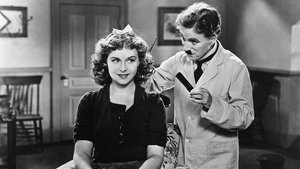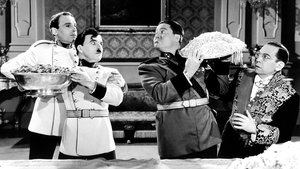Contact: [email protected]
Video Sources 0 Views

Synopsis
[ez-toc]




Introduction
In the vast landscape of old films, some gems shine brighter than others, leaving an indelible mark on cinematic history. One such masterpiece is “The Great Dictator Colorized,” a black and white classic from 1940 directed by and starring the legendary Charlie Chaplin. Now, in a bold move, the film has undergone the process of colorization, breathing new life into its frames and providing audiences with a fresh perspective on this iconic piece of cinema.
The journey into colorization raises questions about the delicate balance between preserving artistic integrity and enhancing accessibility. In this article, we will delve into the historical significance of “The Great Dictator Colorized” in its original form, explore the controversy surrounding colorization, and scrutinize the results of “The Great Dictator Colorized 1940.” Let’s embark on a cinematic journey that transcends time, exploring the nuances of restoration and the enduring impact of a timeless work of art.
Read Media File Transfer Agreement: Terms and Conditions
Read FAQ
The Great Dictator Colorized: A Cinematic Masterpiece in Its Original Form
“The Great Dictator Colorized” stands as a poignant cinematic reflection on the turbulent times of the early 1940s. Charlie Chaplin, known for his silent film prowess, took a bold step into the world of talkies with this satirical masterpiece. The film is a biting political commentary, lampooning Adolf Hitler and Benito Mussolini as Chaplin portrays both a Jewish barber and a ruthless dictator.
In its original black and white presentation, “The Great Dictator Colorized” resonated deeply with audiences, offering a powerful critique of Nazi Germany and fascism during World War II. Chaplin’s dual roles showcase his versatility as an actor, and his directorial finesse is evident in the film’s seamless blending of humor and social commentary. The stark black and white visuals added a layer of intensity, emphasizing the gravity of the political and social issues addressed.
The film’s impact extended beyond its theatrical release, becoming a symbol of resistance against tyranny. The iconic final speech delivered by Chaplin’s character, pleading for humanity and peace, remains etched in the collective memory of cinema enthusiasts. “The Great Dictator Colorized” earned its place as a timeless classic, leaving an indomitable legacy.
The Significance of Colorization in Restoring and Revitalizing Old Movies
The process of film restoration has evolved over the years, with advancements in technology allowing for a more comprehensive and nuanced approach. Colorization, once a contentious technique, has gained prominence as a means to breathe new life into old films. Film restoration, at its core, aims to preserve and enhance the visual and audio quality of a movie, ensuring its longevity for future generations.
Colorization, specifically, involves the digital addition of color to black and white films. This process aims to make old classics more accessible to contemporary audiences while offering a fresh visual experience. The significance lies in the restoration of a film’s aesthetic appeal, bringing it closer to the standards of modern cinema.
Advancements in colorization technology have allowed for a more nuanced and faithful recreation of the original color palette. While early attempts at colorization were criticized for their lack of accuracy and subtlety, modern techniques employ sophisticated algorithms and extensive research to ensure that the added colors align with the filmmaker’s original vision.
Controversies Surrounding Colorization: Preserving Artistic Integrity vs. Enhancing Accessibility
The introduction of colorization into the realm of film restoration has not been without controversy. Traditionalists argue that the process compromises the artistic integrity of the original work. They contend that a filmmaker’s choice to shoot in black and white was a deliberate artistic decision, and altering it disrupts the intended visual impact.
On the flip side, proponents of colorization argue that it makes classic films more accessible to a contemporary audience. The younger generation, accustomed to the vibrant colors of modern cinema, may find it challenging to connect with the monochromatic aesthetics of old films. Colorization, they assert, is a tool to bridge the gap between generations and introduce classic cinema to a wider audience.
This debate becomes particularly fervent when considering films like “The Great Dictator Colorized” where the choice of black and white was intrinsic to the film’s visual language. As we explore the colorized version of this iconic movie, we must question whether the added dimension enhances or dilutes the intended impact of Charlie Chaplin’s satirical masterpiece.
The Great Dictator Colorized 1940: Examining the Results and Its Impact on the Film’s Legacy
Now, let’s turn our attention to “The Great Dictator Colorized 1940.” The decision to add color to this timeless classic undoubtedly sparked intrigue and curiosity. Did the colorization process successfully capture the essence of Chaplin’s original vision, or did it risk diminishing the film’s impact?
Upon viewing the colorized version, one cannot deny the initial awe at seeing familiar scenes bathed in vibrant hues. The visual transformation is striking, offering a fresh perspective on the iconic characters and settings. However, the critical question remains: does the addition of color complement or overshadow the film’s narrative and underlying message?
As we scrutinize key scenes and symbols, such as the infamous globe dance or the poignant final speech, it becomes apparent that colorization introduces a new layer of interpretation. The vibrant colors may distract from the stark political satire, diluting the impact of certain visual metaphors. Conversely, colorization breathes life into the sets, costumes, and characters, providing a level of detail and immersion that was previously inaccessible.
The success of colorization in “The Great Dictator Colorized” lies in its ability to balance these contrasting elements. The added color should enhance the film’s visual appeal without overshadowing the narrative and thematic depth. The legacy of “The Great Dictator Colorized” hinges on striking this delicate equilibrium, allowing audiences to appreciate both the original brilliance and the newfound vibrancy.
Preserving Cinematic Masterpieces for Future Generations: Balancing Between Restoration Techniques
The journey through film preservation is a multifaceted endeavor, requiring a delicate balance between different techniques. While colorization offers a visually captivating experience, it is not the only method of restoration. Digital restoration techniques, such as frame-by-frame cleaning and audio enhancement, play a crucial role in preserving the authenticity of old films.
The choice between colorization and digital restoration becomes a matter of preserving the essence of a film while adapting it to contemporary sensibilities. As custodians of cinematic history, the responsibility falls on us to ensure that future generations can experience the magic of classic films without compromising the artistic intent.
In the case of “The Great Dictator,” a comprehensive approach to restoration involves not only colorization but also meticulous digital enhancements. The goal is to strike a harmonious balance, allowing audiences to appreciate the film’s original brilliance while presenting it in a format that resonates with modern expectations.
The Great Dictator: A Timeless Work of Art That Transcends Its Visual Presentation
In conclusion, “The Great Dictator Colorized 1940” invites us to ponder the delicate interplay between preserving cinematic masterpieces and adapting them for contemporary audiences. Charlie Chaplin’s original work, a black and white masterpiece, stands as a testament to the power of satire and the resilience of the human spirit in the face of tyranny.
The addition of colorization, while initially met with skepticism, succeeds in revitalizing the film for a new generation. It introduces a visual richness that enhances the overall experience without detracting from the film’s inherent brilliance. As audiences grapple with the controversies surrounding colorization, the key lies in recognizing that different restoration techniques can coexist, each contributing to the preservation of our cinematic heritage.
“The Great Dictator Colorized 1940” emerges as a testament to the enduring legacy of one of cinema’s greatest achievements. Regardless of its format, black and white or colorized, the film remains a timeless work of art, transcending its visual presentation. As we navigate the intricate landscape of film restoration, let us celebrate the ability of classic cinema to evolve while retaining its intrinsic magic. The journey into colorization is not just about the hues on the screen; it is a voyage into the heart of cinematic history, where every frame tells a story that resonates across generations.



















